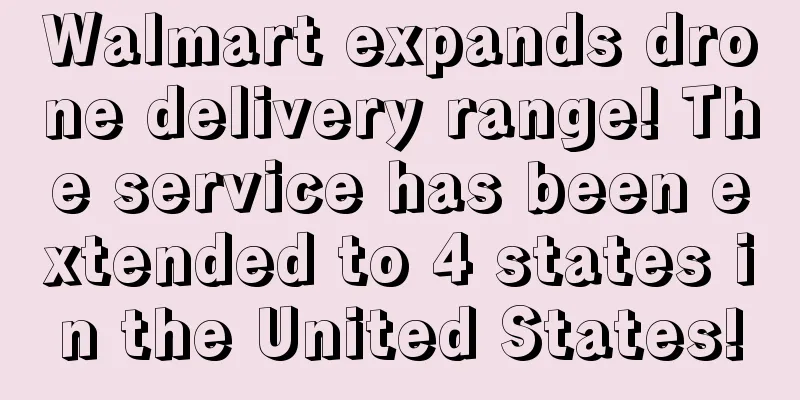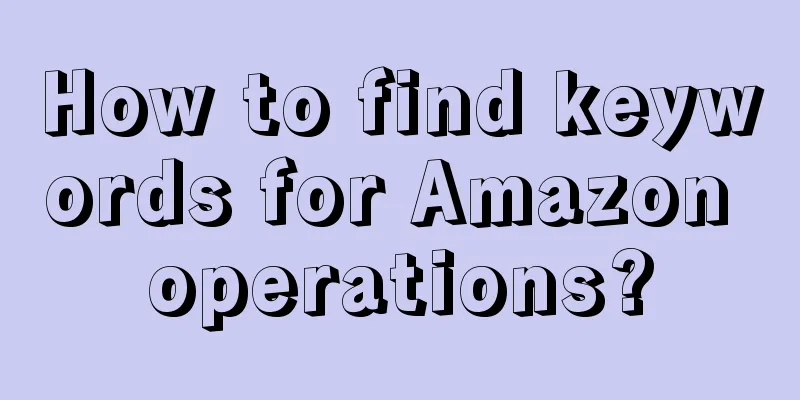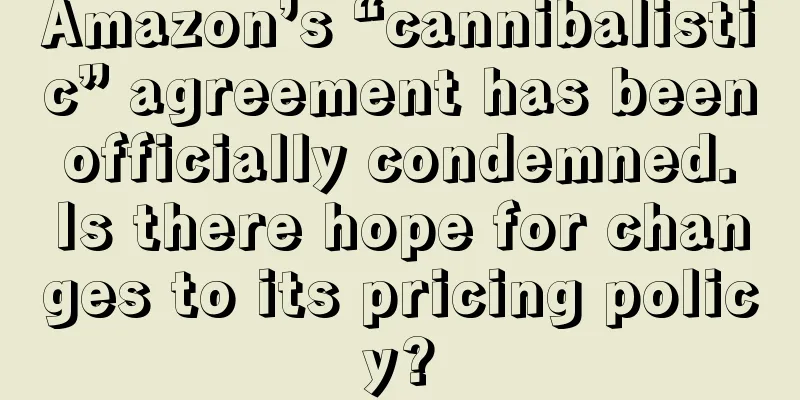Attention! Starting from June, there will be important updates to Amazon Seller Fulfilled Prime!

|
According to foreign media reports, starting from June this year, there will be an important Amazon Seller Fulfilled Prime Update, which includes later cut-off times and requires shipping on at least one weekend day (Saturday or Sunday). Details of the key updates to Amazon Seller Fulfillment are as follows: 4PM deadline (previously 2pm) Starting June 30, 2021, the cut-off time required to maintain SFP eligibility will be later. The minimum carrier pickup time on weekdays will be 16:30, which will set your order cut-off time to 16:00. Later order cut-offs mean more customers shopping in your store will see your offer, and delivery will be faster. You can set the cut-off time in Order Shipping Settings under Shipping Settings for Shipping Zone Automation. Weekend transfers are mandatory Starting June 30, 2021, you must also use a shipping method that supports pickup on at least one weekend (Saturday or Sunday) to remain eligible for SFP. Weekend shipping provides customers with a more consistent delivery experience throughout the week. You can set different order cut-off times for weekends versus weekdays. You can set your weekend delivery preferences in your Order Fulfillment Settings. Carrier Pickup Time When you set an order cut-off time in Seller Central, you must work with your SFP carrier to ensure they arrive for package pickup at the appropriate time after your order is processed. You can find instructions on how to contact your SFP carrier in Seller Central. New multi-warehouse feature To help you offer faster delivery promises and increase your Prime service coverage, we’re also launching Multi-Warehouse. This feature lets you select up to 10 shipping addresses in your Prime shipping template to ensure that the delivery promise your customers see reflects your warehouse locations. The move from 2pm to 4pm cut-off times, with carrier pickup times of 4.30pm or later, will affect many merchants. Not only will this leave you with very little time to collect and pack your order, for some it will mean renegotiating your carrier pickup times. Perhaps more difficult to deal with is the requirement to use shipping that requires pickup on at least one weekend. For merchants who currently work Monday through Friday, this means opening the warehouse on Saturday or Sunday if you want to maintain Amazon Seller Fulfilled Prime status. The good news is that Amazon realizes that business certainty is critical and has provided 5 months’ notice of these changes. This gives you time to adjust your operations or make plans to migrate to regular FBA to serve Prime customers before the Prime update offered to Amazon sellers, or sacrifice the advantages that Prime eligibility provides to merchants. Another viable option for some merchants is to move part of their business to a fulfillment center that can offer Prime services to Amazon sellers, allowing them to work on weekends. This will be a significant change for many business people who don't work six days a week. Take the time to consider your options and decide which is best for your business. The Amazon Seller Fulfilled Prime team said: “We want to ensure you have time to determine how these changes impact your business and work with your carriers to make any adjustments that may be needed, which is why these new requirements will not take effect before June. If you already meet these requirements, nothing will change. If you choose not to meet the requirements of these new programs, you are welcome to continue to offer your products through our Merchant Fulfilled Network or Fulfillment by Amazon.” You and SFP are important to Amazon and its customers, and we will continue to innovate with tools and products to help provide an even more compelling experience. To help you navigate these changes, we have also launched guides in Seller Central with details, examples, and answers to questions, and a dedicated support team, who can be reached at [email protected].” In addition, more sellers are concerned about the cost of FBA. The following content will summarize the cost of Amazon FBA: Costs of Amazon FBA Leveraging Amazon's fulfillment services is a great way to expand your Amazon business and increase revenue. However, cautious Amazon sellers must understand the potential costs associated with choosing the Amazon Fulfillment (FBA) service that Amazon has extended to third-party Amazon sellers. The following will briefly describe the main costs associated with Fulfillment by Amazon that every Amazon seller should be aware of. First, there are two main options available to Amazon sellers for logistics: The first is the “Fulfilled by Merchant (FBM)” option , wherein the Amazon seller will be solely responsible for storing and shipping (fulfillment) all Amazon orders received on the platform. The second option is FBA , in which an Amazon seller’s inventory is shipped to an FBA center for storage and fulfillment once an Amazon Seller Central order is received. Alternatively, you can choose to allow the FBA service to fulfill orders received on other e-commerce channels such as eBay, Shopify, BigCommerce, etc. Therefore, FBA effectively enables e-commerce sellers to use the scale and potential of Amazon's infrastructure for their own benefit. This reduces the need for sellers to focus on e-commerce logistics and allows them to focus more on sales, marketing, innovation, and maintaining a competitive advantage. Once an Amazon seller chooses to opt-in to the FBA option when selling on Amazon, the first step is to prepare your inventory for shipping to an Amazon fulfillment center. You will therefore create an FBA inbound shipment. During this process, you will need to label each unit with a special label (called an FNSKU label) generated on Amazon Seller Central and report to Amazon exactly how many units are being shipped in each box or pallet. Once all the units are labeled and packaged, you will need to pay the shipping fees to ship all the units to the FBA center. The cost of an FBA inbound shipment can vary between sellers. Therefore, it is important to calculate the exact unit costs associated with preparing and shipping your products to FBA. Once you have calculated your unit costs, add these costs to your FBA inventory costs. For example, if your original production cost for one unit is £2.00 and it adds an additional £1.00 to shipping it to FBA, your new inventory cost per unit is now £3.0. This cost addition method will greatly help you calculate your overall business costs and properly track and monitor profitability over time. When your inventory has arrived at an FBA center, other costs to consider include FBA storage fees, FBA pick and pack fees (basically fulfillment fees), FBA return fees, FBA restocking fees, and FBA labor handling fees. All of these types of fees tend to add up and greatly impact Amazon sellers’ profit margins. Therefore, knowing exactly how much you’re paying for each FBA fee, and being able to take action to reduce the myriad fees, will greatly help you improve your Amazon profit margins and has powerfully driven years of steady growth and profitability on Amazon, the world’s most important e-commerce platform. |
<<: Amazon's big reform! These categories will be hit hard...
>>: Warning! Strike at major European ports will lead to port congestion and ship delays...
Recommend
American pet products are experiencing a surge in online consumption! Analysis of the shopping preferences of the three main groups
According to a recent report from the American Pet...
What is Amazon for Teens? Amazon for Teens Review
In January 2019, Amazon launched the youth shoppin...
Amazon's Difficult Operational Journey
Preface of the Little Clone: This week’s Amazon s...
Why do advertising orders always account for a high proportion? Here’s the reason…
🤔 My dear friends, have you ever encountered the ...
Amazing! Tiktok has become so popular!
recently, NASA 's SpaceX Crew-4 mission launch...
What is Discord? Discord Review
Discord, a chat software, is a game chat applicati...
What is KuaTongDa? KuaTongDa Review
Shenzhen Kuatongda Logistics Co., Ltd. was establi...
Zalora releases Southeast Asia trend report, these products are in growing demand
Fashion e-commerce Zalora is reportedly seeking to...
What is Merchant Star Rating? Merchant Star Rating Evaluation
The merchant star rating is a hierarchical system ...
What is Furui Business? Furui Business Review
Furui Business is a business management company fo...
Revealed! New directions of Amazon's popular categories that you don't know about!
Amazon’s popular categories and niche products Rec...
What is Xiaoxing Logistics? Xiaoxing Logistics Review
The predecessor of Xiaoxing Logistics is an intern...
U.S. e-commerce sales to exceed $357 billion! Overview of each platform's performance
It is learned that according to the latest forecas...
What is Amazon Renewed? Review of Amazon Renewed
Products sold on Amazon Renewed can be used by pre...









